Why can domestically produced nuclear magnetic resonance machines be so cheap?, Reduced from 30 million to 2.6 million nuclear magnetic resonance | Technology | Domestic
Recently, the nuclear magnetic resonance instrument independently developed by China has been successfully developed and mass produced in Shenzhen Advanced Technology Research Institute of the Chinese Academy of Sciences, lifting the long-term blockade of this technology abroad.
So, do you know the history of the invention of the nuclear magnetic resonance instrument? What are the difficulties in the development and manufacturing of nuclear magnetic resonance instruments? How will this technology affect human life in the future?
Born out of curiosity about the world
The origin of nuclear magnetic resonance technology can be traced back to a physicist named Otto Stern.
In 1888, Otto Stern was born in Germany. In 1912, after obtaining a doctoral degree in physical chemistry, he followed Einstein to Zurich, Switzerland.
In 1914, he went to teach at the University of Frankfurt and met Born, who was then the head of the theoretical physics department at the university. In 1919, Stern observed that atoms or molecules injected into a high vacuum chamber moved in a straight line, forming a stream of particles that resembled a beam of light in some ways. Out of curiosity about the essence of the material world, he and his assistants began molecular beam experiments.
Experimental diagram of Stern and Gallach's discovery of electron spin
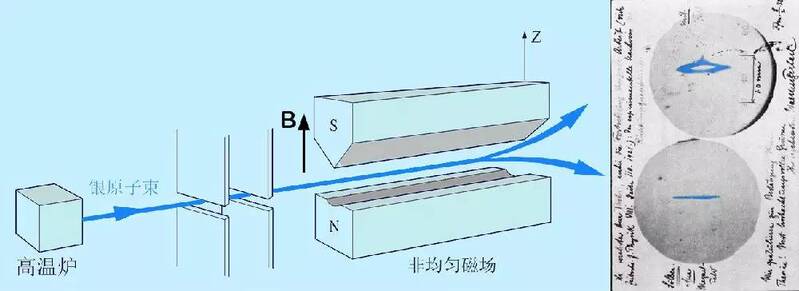
At this time, just after the end of World War I, the Department of Physics at the University of Frankfurt was facing a shortage of funds. The department head, Born, began to introduce Einstein's theory of general relativity to the public for a fee, raising approximately 7000 marks in funds. It is these funds that ensure the continuity of the Stern experiment.
By 1920, significant progress had been made in the experiment, and Stern and his assistants observed that under the influence of an external non-uniform magnetic field, the spatial orientation of atoms was quantized, and the magnetic moment of protons, a subatomic particle, was measured.
But at that time, Stern did not realize how much impact this experiment would have on future human life.
In 1927, an American scientist named Rabbi approached Stern and proposed improvements to the molecular beam experiment. Subsequently, Rabbi invented a method for accurately determining nuclear magnetic properties and brought this technology to the United States.
During World War II, Bloch and Persell laid the foundation for nuclear magnetic resonance research through their collaboration and interaction with physicists such as Rabbi. Just after the end of World War II, Bloch and Purcell went to Stanford and Harvard respectively, and made breakthroughs in accurately determining the nuclear magnetic properties of substances using new methods.
By 1946, Varian, an assistant physicist at Stanford, keenly realized the broad application prospects of nuclear magnetic resonance technology in the field of chemical analysis. So he convinced Bloch and others to embark on the commercialization path of nuclear magnetic resonance. In 1952, Varian Company developed the world's first commercial nuclear magnetic resonance spectrometer and used it for oil exploration.
In 1976, by combining computer technology, electronic circuit technology, and superconductor technology, British scientist Mansfield obtained the world's first human fault image. From then on, magnetic resonance imaging technology rapidly expanded to medical clinical applications and other broader fields.
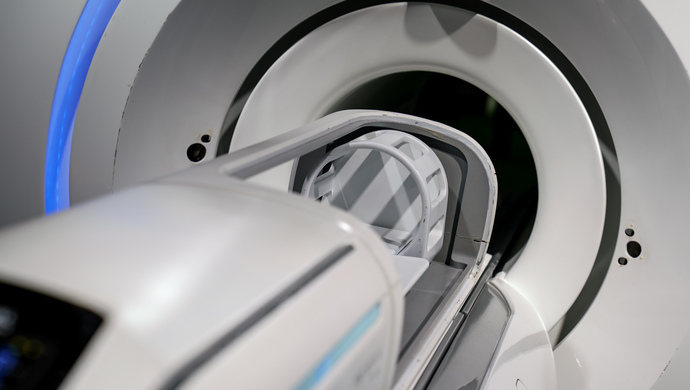
How to overcome the difficulty of manufacturing
Unlike ordinary X-ray and CT scanning imaging techniques, magnetic resonance imaging has the advantages of multiple imaging parameters, fast scanning speed, high tissue resolution, and clearer images. Not only does it have no radiation, but it is also accurate enough for the diagnosis of parenchymal organs, as well as the heart and large blood vessels.
So, how is magnetic resonance imaging achieved? This mainly relies on the super strong magnetic field environment.
As is well known, water in the human body accounts for about two-thirds of body weight, and the proportion of water in different tissues and organs varies greatly. Therefore, H not only has a high content, but also can meet resonance conditions.
Under normal circumstances, H is generally in an irregular state of motion. But in the strong magnetic field environment created by the nuclear magnetic instrument, the radio frequency field can emit energy to the hydrogen atoms in the human body, which absorb and release energy, and generate nuclear magnetic resonance. The signal is collected and then processed into an image by a computer.
Therefore, the core part of the nuclear magnetic resonance instrument lies in the superconducting magnet.
At present, ordinary nuclear magnetic resonance instruments on the market need to achieve a magnetic field of at least 1.5t, which is equivalent to 50000 times the Earth's magnetic field. The generation of a strong magnetic field requires the use of strong currents from superconducting coils, which inevitably requires the superconducting magnet to operate at extremely low temperatures.
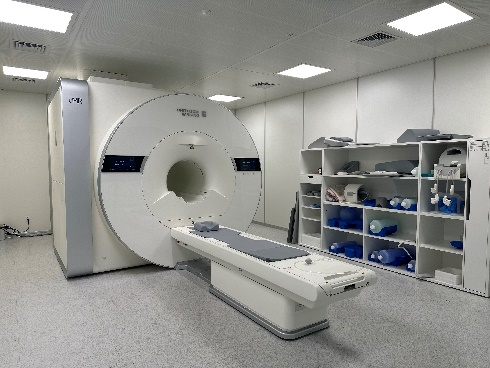
To achieve long-term operation of nuclear magnetic resonance equipment below -260 ℃, not only does it require strong power support, but also a complete set of related technologies and production industrial chains. In addition, other components also have high technical requirements, such as magnetic signal to image conversion, chips, RF energy reception and release, etc. Therefore, for a long period of time in the past, the market for nuclear magnetic resonance instruments in China was monopolized by companies such as GE, Philips, Siemens, etc., and the cost of nuclear magnetic resonance instruments and maintenance was also very high.
Now, at Peking University Shenzhen Hospital, China's independently developed nuclear magnetic resonance instrument has been put into operation, which not only has higher resolution but also accelerates imaging speed.
It is understood that the core components of domestic nuclear magnetic resonance instruments are independently developed by China, with 124 advanced patents, and their price threshold has also dropped from 30 million yuan to 2.6 million yuan. This will gradually reduce the cost of relevant examinations, and the cost of medical treatment for the general public will also decrease accordingly.
International pioneering 5.0T ultra-high field whole body magnetic resonance imaging
Behind this achievement is the innovation of China's scientific research mechanism. At Shenzhen Advanced Technology Research Institute of the Chinese Academy of Sciences, all scientific research projects should be firmly bound to the industrial demand from the beginning of project establishment. Guided by major demand, they should focus on solving the "neck jam" problem. The pain point of the market has become the primary goal of R&D units.
Timely feedback from the industry also enables research and development institutions to adjust their paths and make breakthroughs in a timely manner. Taking the first batch of domestically produced nuclear magnetic resonance instruments as an example, one of its cooperative development units, Lianying Medical, brought clinical feedback to the research team shortly after the instruments were launched, and collaborated with research institutions to jointly solve problems, effectively achieving the integration of production and research.
Multi scenario, promising for the future
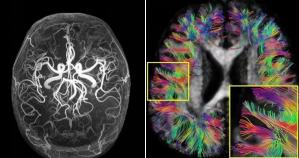
At the International Medical Magnetic Resonance Society Annual Conference held in June this year, the progress of combining AI with medical imaging received widespread attention. Some experts believe that with the advent of AI in all directions, magnetic resonance imaging will become more widespread and efficient in all directions.
In recent years, artificial intelligence applications in the field of magnetic resonance have continuously made new progress, promoting the accelerated evolution of magnetic resonance in terms of efficiency, effectiveness, process optimization, and other aspects.
Among them, Shentong Medical combines artificial intelligence with medical imaging data, starting from the upstream, i.e. the image generation process, to accelerate the MRI imaging process 4-10 times and ensure diagnostic accuracy.
In addition, magnetic resonance imaging is also undergoing further upgrades and integration. In the future "one-stop image center", using mixed PET/MRI imaging will avoid patients from performing time-consuming, labor-intensive, and complex multiple image examinations.
5.0T ultra-high field high-resolution imaging effect
In fact, after more than half a century of in-depth research and rapid development, nuclear magnetic resonance technology has continuously broken through, forming a new discipline with a complete theoretical foundation and wide applications.
In the fields of chemical engineering and polymer materials research, nuclear magnetic resonance has a wide range of applications. For example, in the loading of rocket fuel, nuclear magnetic resonance can accurately detect defects in solid fuel, as well as the distribution of fillers, propellants, and plasticizers.
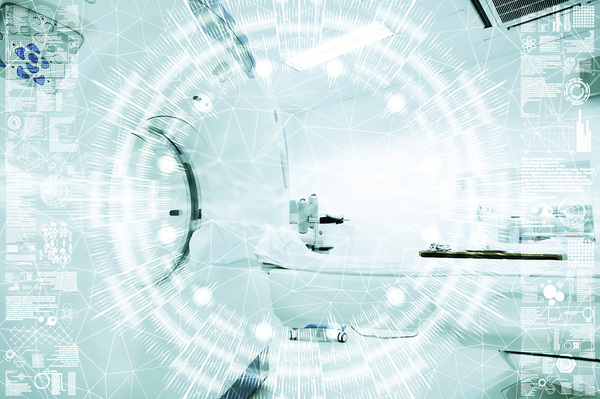
In the field of geological exploration, nuclear magnetic resonance can perform rapid non-destructive testing on rocks in mining areas, thereby achieving the goal of quickly, economically, and continuously evaluating the physical properties of oil and gas reservoirs. In addition, similar to oil and gas exploration, it can also help us solve the problem of water scarcity.
However, some scholars believe that the development of nuclear magnetic resonance technology is still in its infancy, with potential and enormous technological innovation prospects in many fields such as quantum information processing, molecular structure testing and organic synthesis reactions, psychology, and mental health.




